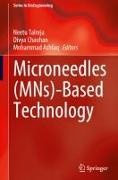Read more
This book highlights the fabrication of various types of solid, hollow, and dissolvable microneedles (MNs) using various synthesis processes and their applications in medicine, agriculture, and sensors. MN-based technology emerges as a sign of hope, offering a painless delivery system. In general, MN-based technology uses tiny needles to puncture the outermost layer of the skin. MNs are made of various materials like metals, silicon, and polymers for efficient delivery of biomolecules. With the tremendous success of MNs in the drug delivery system, researchers try to use MNs in agriculture and sensor applications to improve plant health via monitoring and delivery of agrochemicals. By modulating the materials of MNs, drugs and biomolecules can be delivered in a controlled manner. In general, MN-based technology holds significant opportunities for improving delivery of the drugs/biomolecules and opens new wings toward agriculture and sensing applications. Moreover, MN-based technology enables newer avenues for therapeutic and diagnosis of diseases.
List of contents
Microneedles: Fabrication, characterization, and commercialization strategy.- Rapidly separating microneedles based transdermal patches.- Dissolvable polymeric microneedles for insulin delivery.- Hollow microneedles based injectable delivery system.- Porous polymeric microneedles for transdermal delivery system.- Polymeric microneedles for vaccine delivery.- Microneedles based epidermal sensor for the diagnosis of diseases.- Microneedles based delivery system for plants.- Microneedles-based technology for monitoring the food health.- Microneedles based transdermal patches for wound dressing.- Microneedles-based sensor for detection of environmental pollution.- Carbon-doped microneedles for environmental applications.

